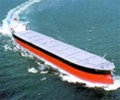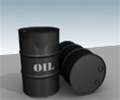Nordic flat product prices pulled in opposite directions in April

Regional mills’ input costs are rising but they are struggling to fill their production capacity. Competitively priced import offers are scarce, while local purchasing activity is, mostly, quite weak. Consequently, the majority of selling values reported are slightly down. The remainder are unchanged, with the expectation of imminent reductions.
Demand for hot rolled coil, in Denmark, is subdued. End-users, in Sweden, are reluctant to pay more and distributors attempted to minimise price rises in their quarterly agreements with producers. Sales volumes remain satisfactory, in Norway, but buyers are becoming hesitant.
Plate-consuming sectors, other than agricultural equipment, in Denmark, are performing well. The prospect of falling inventory values is making buyers cautious. Swedish construction activity is slowing. Plate consumption was down, in Finland, in the first three months of 2019, compared with the year earlier figure. No pickup in demand is detected. Sales tonnages, in Norway, are satisfactory.
Ex-mill delivery lead times, for cold rolled coil, are declining, in Denmark. Asian import offer prices are not much cheaper than locally produced material and, therefore, not very attractive. Sales tonnages are down, slightly, in Sweden. The weak Swedish krona makes mill purchase costs expensive. Coils are readily available, in Norway.
Demand for coated sheet and coil, from the German and Swedish automotive supply chains, remains subdued. Orders from the local building sector, in Denmark, however, are at a reasonable level. Sales of galvanised sheet and coil are fair, in Sweden. Activity, in the Finnish automotive and construction segments, is poor. Demand remains muted, in Norway.
In Sweden, demand, for drawing quality wire rod, is mixed. Customers in several sectors report a slowdown, while others remain busy. The market for mesh quality material is softening. Supply is plentiful. Raw material costs have risen, in Finland, but ex-mill selling values are down. Order volumes, from the automotive industry, are weak.
European producers of medium sections and beams sought price increases, in Denmark, in April, but, eventually, struggled to maintain rollover figures. Demand is on the downward part of the current cycle, in Sweden. Exchange rate fluctuations are affecting local prices. Sales volumes are relatively stable, in Finland, but forecasts suggest a negative trend.
Reinforcing bar demand is quite good, in Denmark. Many new residential building and infrastructure schemes are in progress. Sales tonnages, in Sweden, are similar to those during the same period, twelve months ago. Rapid utilisation of the EC safeguarding quotas could lead to price increases, in Europe. A seasonal pickup in activity is reported, in Finland. Many stockists bought large volumes, from Russia, before the quota tonnage was utilised.
Prior to recent developments in the Brexit negotiations, buyers of merchant bars in Denmark, and elsewhere, reported a reluctance to place orders with UK producers, fearing the application of tariffs, in the event of a “no-deal” outcome. Swedish demand reduced, year-on-year, but is steady, at an acceptable level. Finnish sales tonnages are stable. The local market is heavily influenced by Russian suppliers. Norwegian purchasers report consistent offer prices from Chinese and Russian suppliers, while those from Turkey are rising.
Source: MEPS

 Hellenic Shipping News Worldwide Hellenic Shipping News Worldwide, Online Daily Newspaper on Hellenic and International Shipping
Hellenic Shipping News Worldwide Hellenic Shipping News Worldwide, Online Daily Newspaper on Hellenic and International Shipping





















 PG-Software
PG-Software